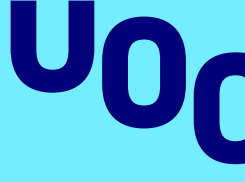For broadcasting additional information imperceptibly
Audio Watermarking is a technology the UOC has recently patented in Europe. For use in fields such as advertising and security, it hides and extracts watermark data (sequences of embedded bits) in broadcast audio signals (TV, radio or internet); the data contain unique identifiers for both the audio from which the mark was extracted and the content distribution source.
Audio Watermarking enables additional information related to the content to be broadcast in a way that is imperceptible to the user. This technology could have a wide variety of applications: broadcast monitoring, owner identification, proof of ownership, transaction monitoring, content authentication (with or without tamper detection), copy control, device control, and much more.
The technique enables information to be embedded in audio signals in a way that renders it imperceptible to the human ear. The embedded information can be picked up by electronic devices such as mobile phones or tablets. Audio Watermarking has been developed under the coordination of David Megías, lead researcher with the K-riptography and Information Security for Open Networks (KISON) research group of the IN3, where he is also the director.
“Our system offers multiple advantages, such as watermark recovery at distances of over six metres from the audio transmitter, high fidelity and robust recovery even under adverse conditions, improved time synchronization between emitter and receiver, and high capacity, reaching over 1000 bits per second”, Megías commented.
One of its possible applications is in the advertising industry. For example, users could download coupons for a product while listening to a radio broadcast about it. Another use of watermarking is related to digital fingerprinting. Organizers of the Oscars send DVDs of the films to the members of the Academy with an embedded fingerprint, which is different for each person. That way, they can check whether any member of the Academy posts the films on the internet or supplies a DVD to unauthorized individuals for them to redistribute.

